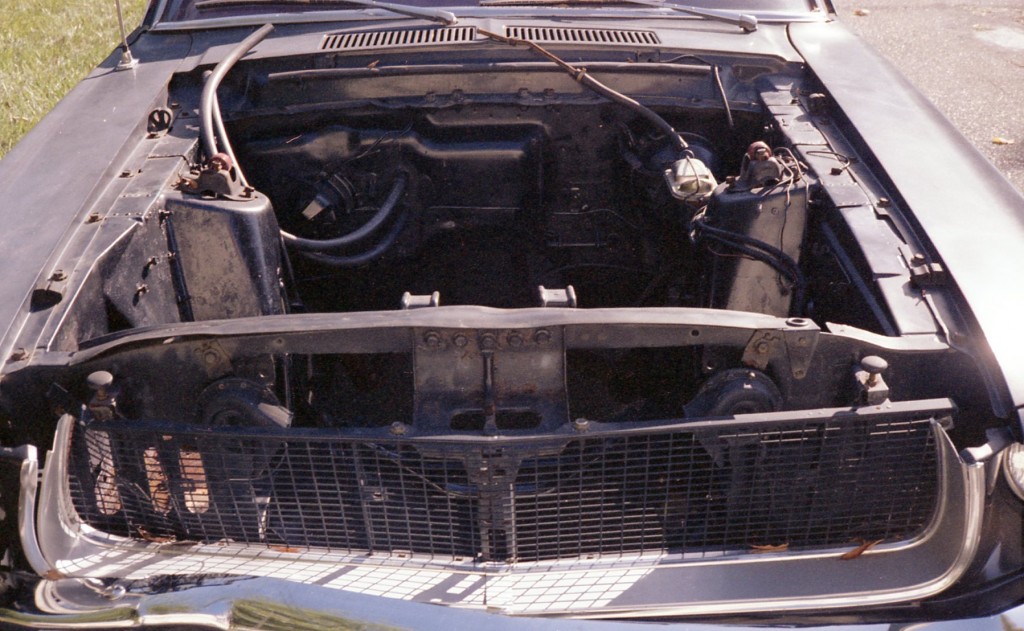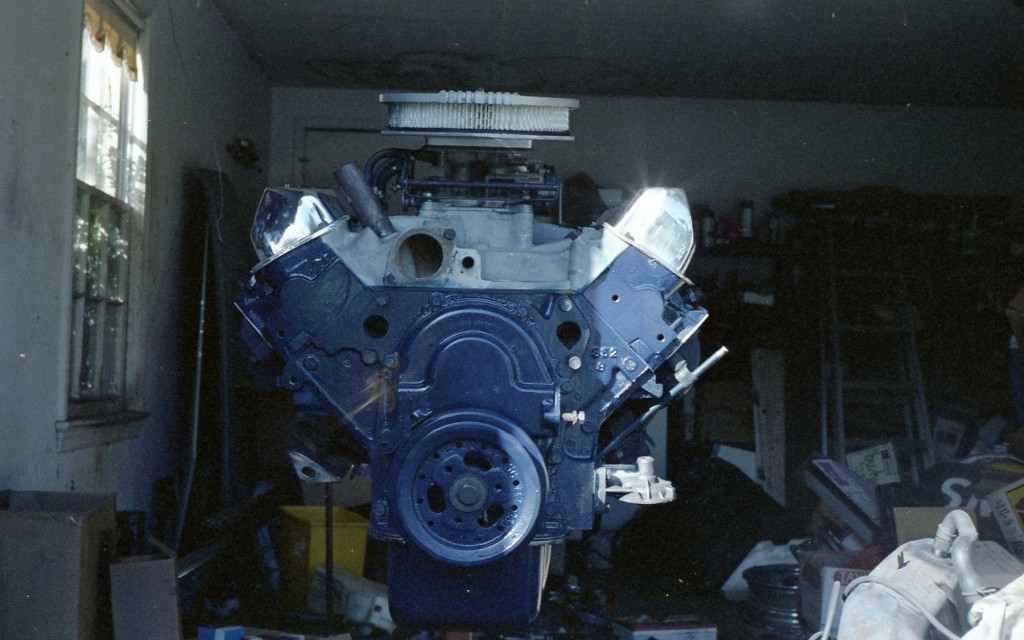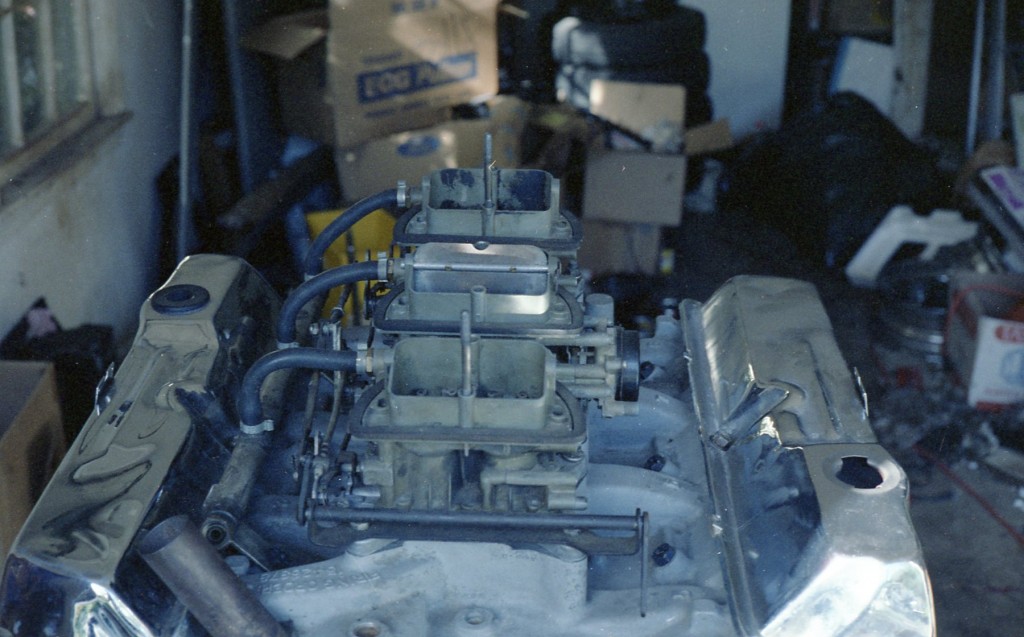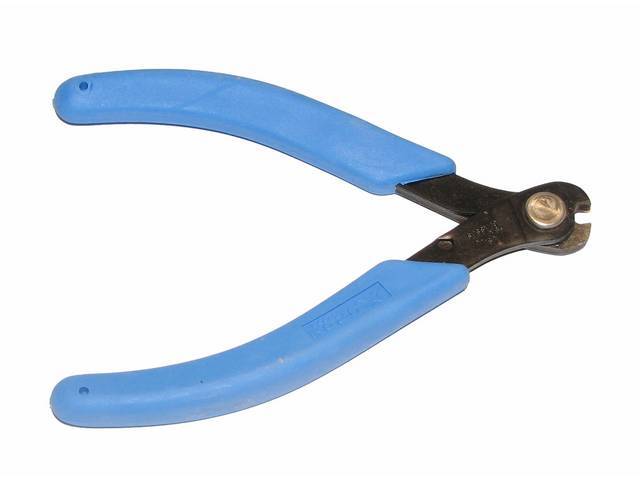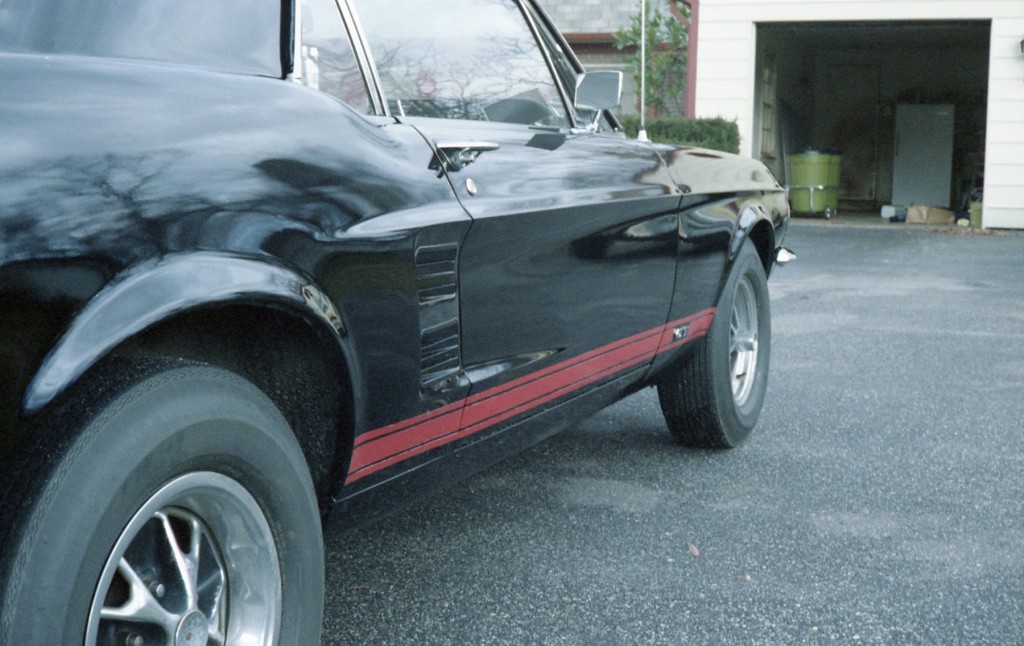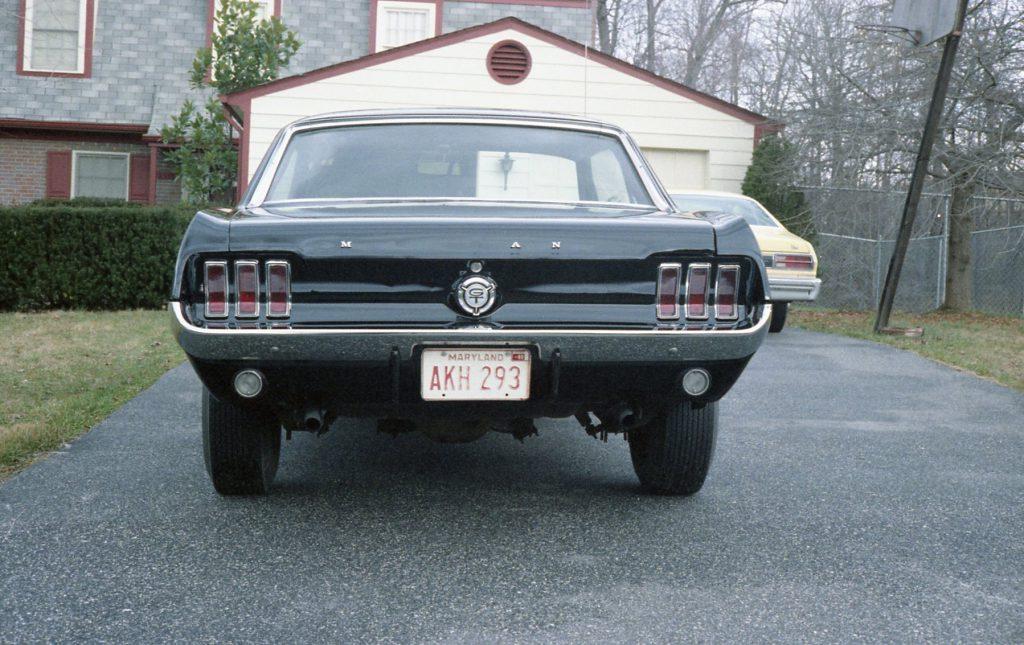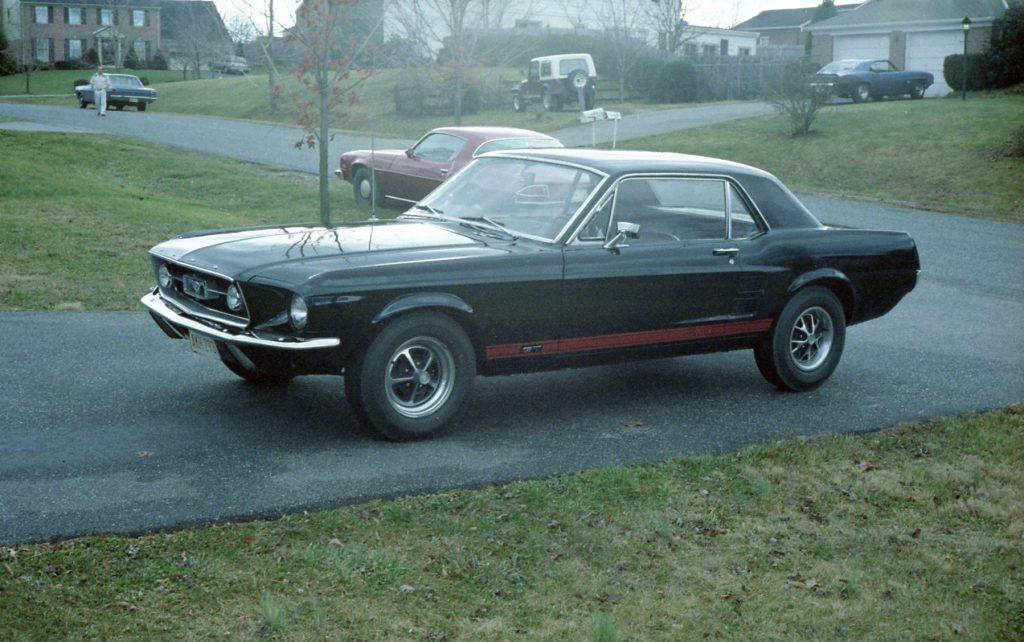The honey-do list got in the way of my working on the car over the weekend. That meant I had to wait until the work week commenced before I could get back to the Mustang project. After taking care of my Monday to do list that had developed over the weekend I had an hour or two to get back to work on the project.
First order of business was to install the starter. When I parked the car 15 years ago the starter died. I had pulled it and taken it to the local auto parts store for testing. It had been completely seized so I purchased a rebuilt one. That starter has sat on my garage shelf for the past 15 years. I also had a new set of starter bolts squirreled away. It took me a few minutes to locate the bolts, but I eventually found them and was ready to get going.
Now back in the old days replacing the starter meant that I was capable of sliding myself under the car to work on it. No jack or jack stands used to be required for this job. Years later I had gained more than enough weight to prevent me from fitting under the car as easily as I used to. I got the car up on jack stands and slid myself underneath to have a look. It was dark and cramped under there. And moving my head to look around made me light headed and dizzy. After a bit of wrestling and struggling I had the starter in place and two bolts holding it in. There was a third bolt, but I needed more room and better lighting to get that one in. I plan to install the last bolt after I get the car out of the garage. I installed the cable that delivered battery power to the starter and crawled back out from underneath the car.
Next step was to change the oil. I didn’t think it was a good idea to trust 15 year old motor oil even though it looked really clean. I drained out the old oil and removed the old oil filter. The rubber gasket from the old filter had become detached from the filter and was stuck to the oil filter adapter. This was easily removed, but should serve as a reminder that this can happen. It was the first time for me, but there are plenty of stories out there of people who didn’t remove the old gasket and ended up with oil leaks. One trick I like to use is to fill the oil filter with a quart of oil before installing it. Since the oil filter adapter is at 90 degrees to the side of the block I can do this without spilling any oil. I like to do this so that there is a second or so less where the oil filter is filling up and oil isn’t getting circulated throughout the engine. It may be overkill, but on this car it is so easy to do that I feel it is worth it. Finally I filled up the crankcase with oil and checked the level on the dipstick. The dipstick said the crankcase was full.
The last step for today (I had very limited time) was to clean the ends of the battery cables and connect them to the battery. I was a little hesitant to do this step as I wasn’t completely sure that the wiring hadn’t deteriorated over time or that rodents hadn’t chewed their way through some of the wiring. Either one could lead to shorts that could even result in a fire. Not something anybody wants to have happen. But I was able to get the battery connected without any drama or smoke. As a final check of my work I decided to try the starter to see if it worked or not. 15 years on the shelf is a long time.
Turning the key to the run position caused the instrument cluster to come to life. I had gauges and red idiot lights where I expected to see them. A great first step.Then I got brave and tapped the starter, only half expecting it to work. But the engine spun around and the oil pressure light even went out after a few revolutions. That was the good part. The part that made me nervous was that the engine made a whining kind of noise I hadn’t heard before. No clanks, rattles, or scraping sound. Just a very loud whine. It made me nervous and I was at the point where I planned to stop for the day. But now I need to figure out whether it was a result of a 15 year old starter, a bad starter installation, nothing i need to worry about, or something scary. Time to contact some more knowledgeable people and see what their opinions are.
After consulting with Val we felt that the noise was he starter turning much faster than I was accustomed to since there were no spark plugs and hence no compression. The starter was able to turn fast due to the lessened resistance of the motor. When I put the spark plugs back in it should turn over the way I am accustomed to. That wraps things up for the day however. The next nice weather day when I have free time I expect to have the engine running again.

 One evening on my way over to Jimmy’s house I was involved in a minor accident. Some damage to the front bumper, grille, and hood. Nothing that couldn’t be fixed, but it was fairly upsetting at the time. Here’s a picture after the accident showing some of the damage.
One evening on my way over to Jimmy’s house I was involved in a minor accident. Some damage to the front bumper, grille, and hood. Nothing that couldn’t be fixed, but it was fairly upsetting at the time. Here’s a picture after the accident showing some of the damage.